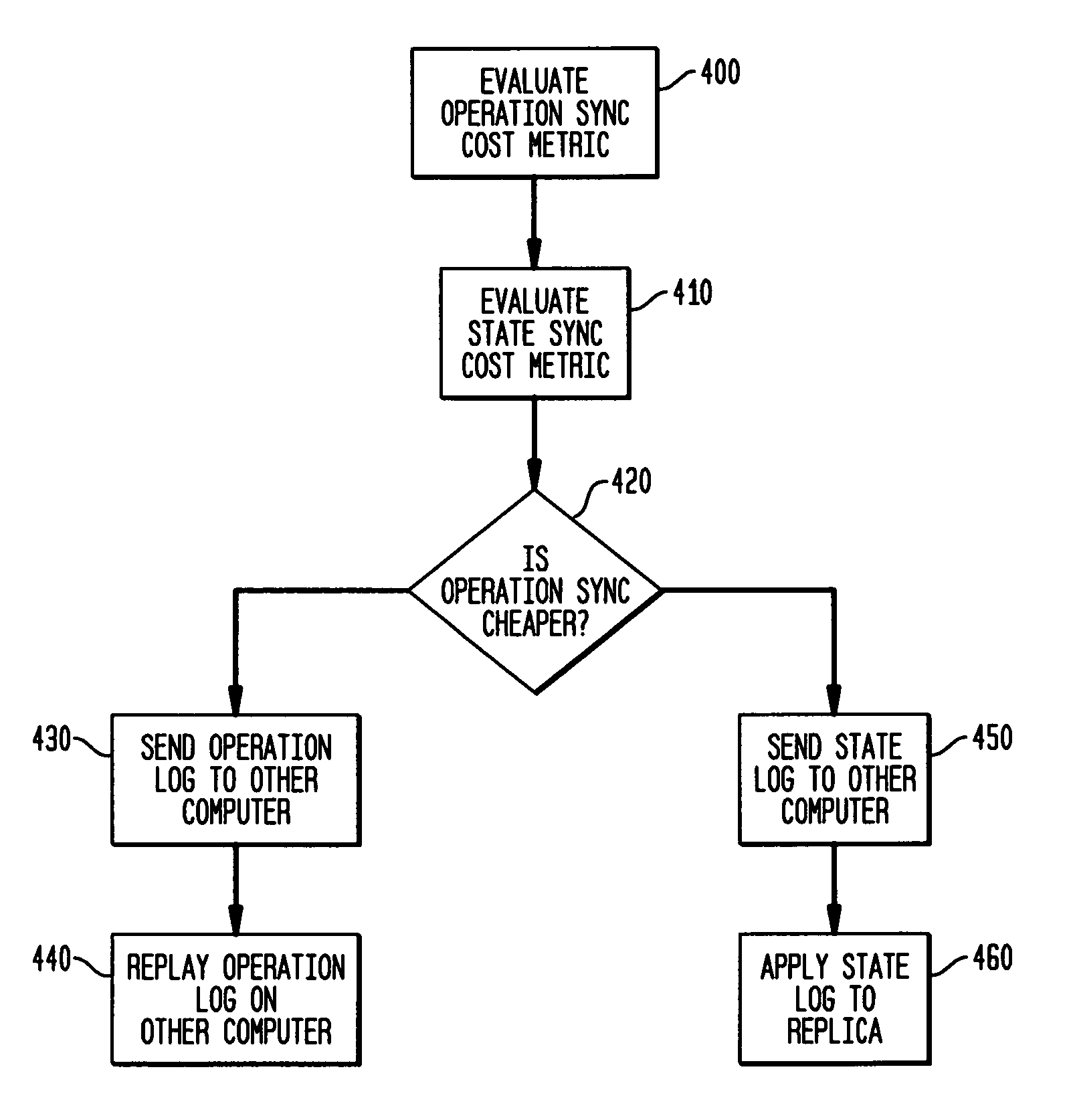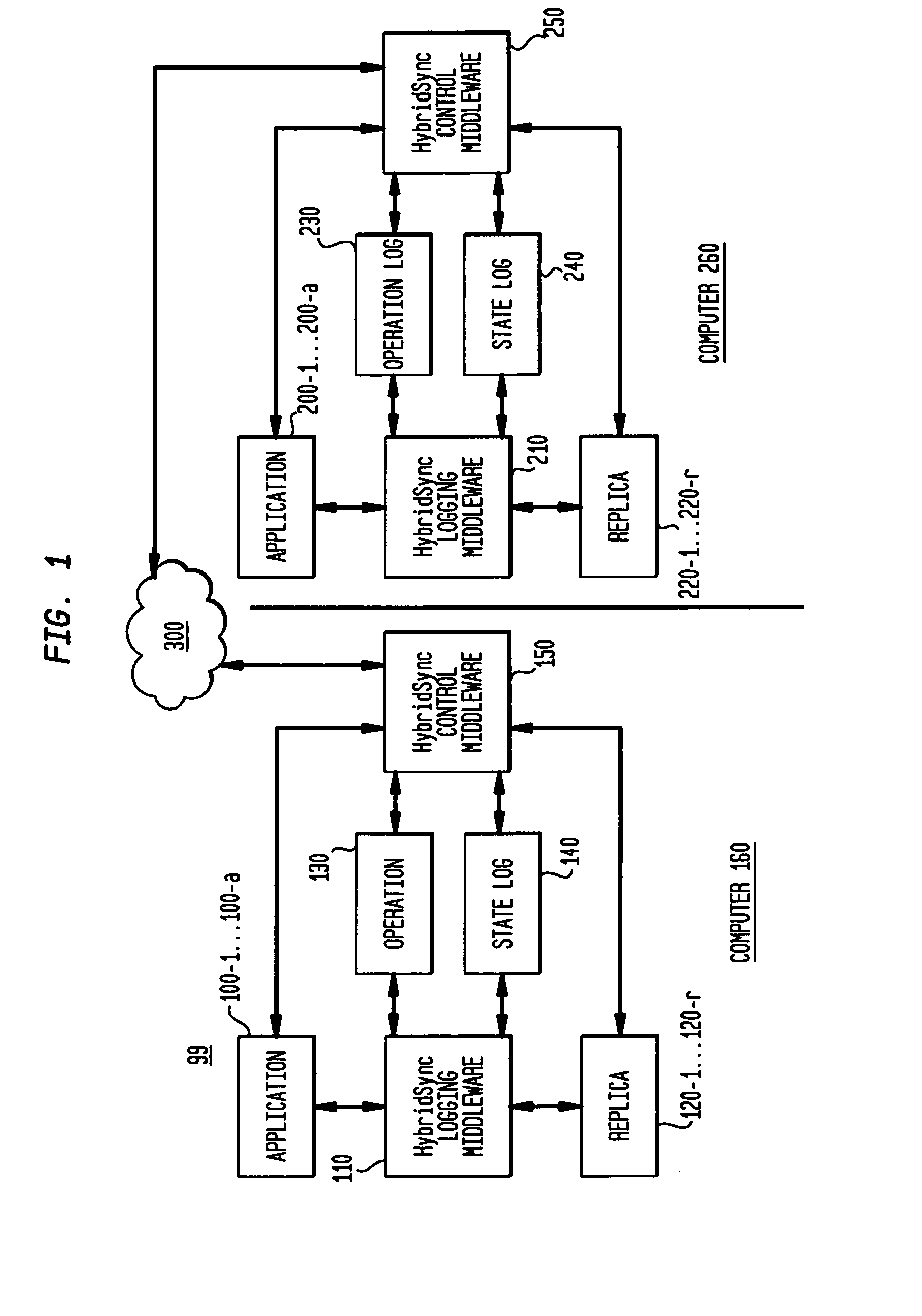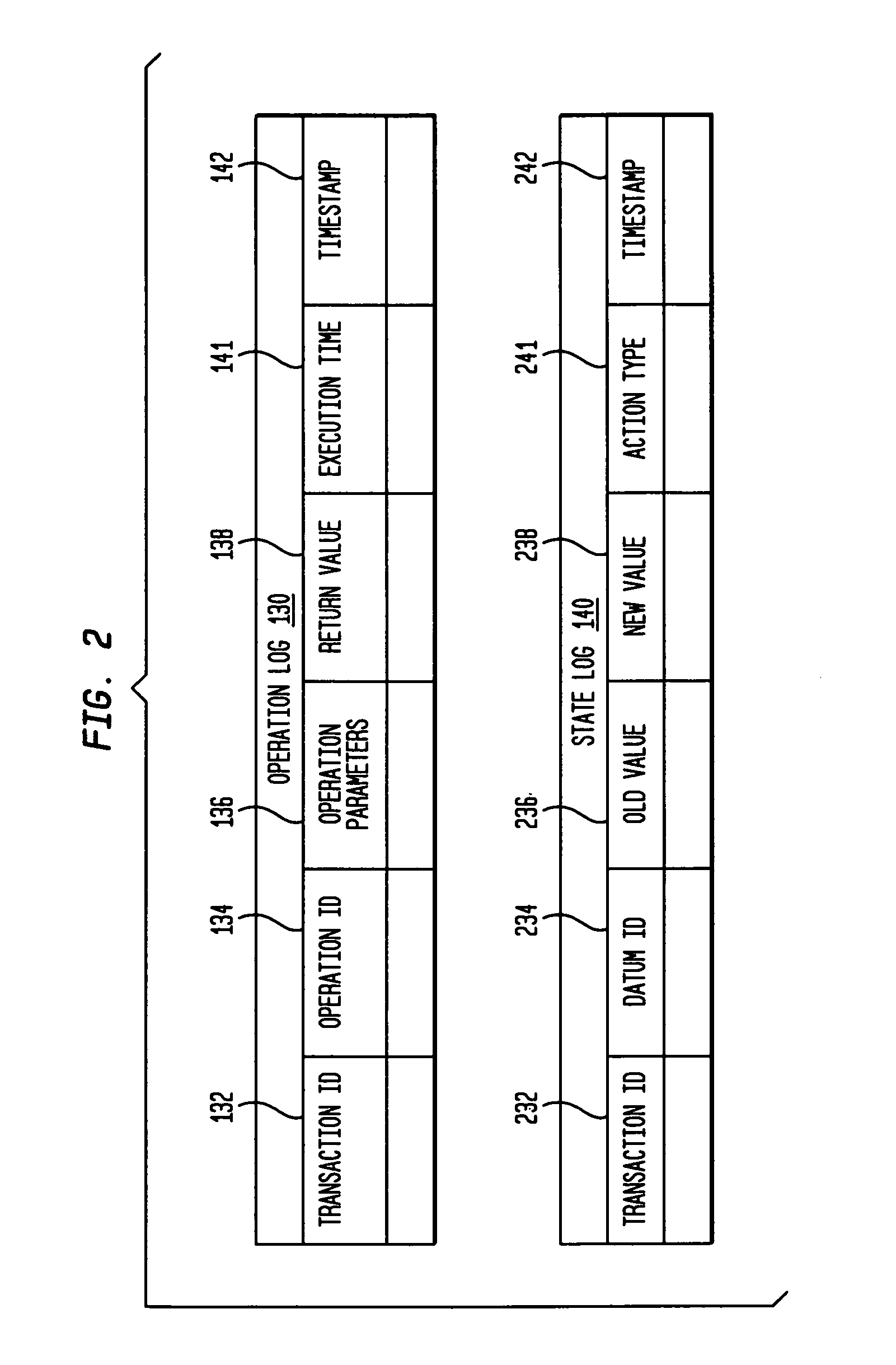Method and system combining state replication and operational-replay synchronization
a state replication and state synchronization technology, applied in the field of shared data structure synchronization, can solve the problems of consuming a lot of cpu time, not performing well, and not enabling the client computers to access the applications, so as to minimize the amount of power consumed by a mobile device, optimize the amount of bandwidth consumed, and optimize the time taken
- Summary
- Abstract
- Description
- Claims
- Application Information
AI Technical Summary
Benefits of technology
Problems solved by technology
Method used
Image
Examples
Embodiment Construction
[0024]The present invention provides a system, method and computer program product for synchronizing replicated data structures (e.g., databases), wherein the system selects, at synchronization time, whether to use a state-based synchronization or operational-replay synchronization, based on the states of the replication databases, the current environment, and other configuration information. For example, the system may decide to choose the replication methodology which provides the fewest conflicts, or the lowest bandwidth or, the lowest CPU time, etc.
[0025]Referring to FIG. 1, there is depicted a block diagram of one embodiment of the invention. While only two computer systems represented as computer system 160 and computer system 260 are shown in FIG. 1, it is understood that the invention is applicable to more one or more computers. Computer system 160 includes one or more Applications 100-1 through 100-a, and Replicas 120-1 through 120-r which are replicas of database contents ...
PUM
 Login to View More
Login to View More Abstract
Description
Claims
Application Information
 Login to View More
Login to View More - R&D
- Intellectual Property
- Life Sciences
- Materials
- Tech Scout
- Unparalleled Data Quality
- Higher Quality Content
- 60% Fewer Hallucinations
Browse by: Latest US Patents, China's latest patents, Technical Efficacy Thesaurus, Application Domain, Technology Topic, Popular Technical Reports.
© 2025 PatSnap. All rights reserved.Legal|Privacy policy|Modern Slavery Act Transparency Statement|Sitemap|About US| Contact US: help@patsnap.com



